Jim Nielson’s term for well-recognized old images and visual clichés that have been so widely reproduced and re-used that they have lost most of their original meaning. Such images are empty of significance for most viewers, or at most carry a tiny bit of connotation of some sort. People who have seen them reproduced but do not know anything more about them seem to find them so empty they can now operate as exploitable images for memes.
Exploitables are usually pictures of anonymous people or animals that have no clear, obvious, or known context. Meme shells are images that actually have (at least historically, and still for some people) a lot of context. However, the images have been so widely seen in popular culture (and now in memes themselves) that some people now feel comfortable using them as (empty) shells for memetic messages.
A classic example of a meme shell is the Mona Lisa. Almost everyone has seen it many times, but like so many images in celebrity pop culture, it may mean little to them except that it is famous. It’s become another empty, decontextualized image.
There is a fair bit of history behind this painting, however, and people who love it or have studied it see it as a painting rich in contextual meanings. It means little to the typical uneducated viewer today, on the other hand, except that it connotes fine art, high art, or a great painting. Few people know anything about its history, and most people have seen it reproduced so many times that they do not respond to the “seductive” or “enigmatic” smile that used to get people excited. Instead, it is just a familiar, but arguably dead (meaningless) image.
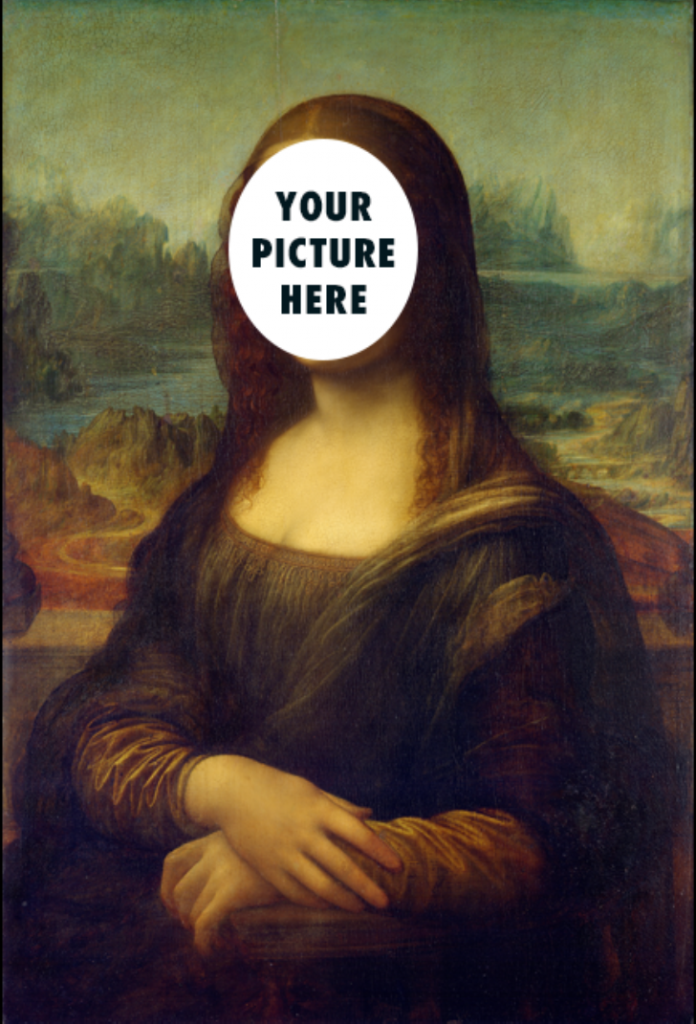
A lot of famous paintings from the Western tradition with Christian themes fall into this category. Even people who call themselves Christians today may know or feel relatively little about the scenes depicted in them, for example da Vinci’s Last Supper, or Michelangelo’s Creation of Adam.
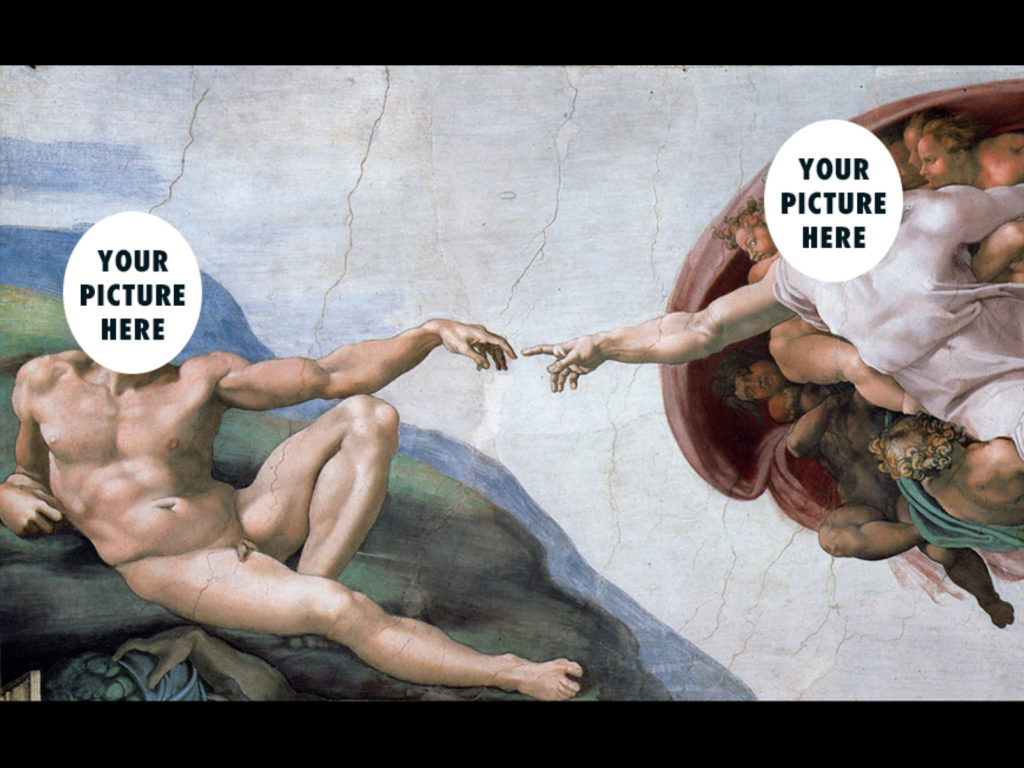
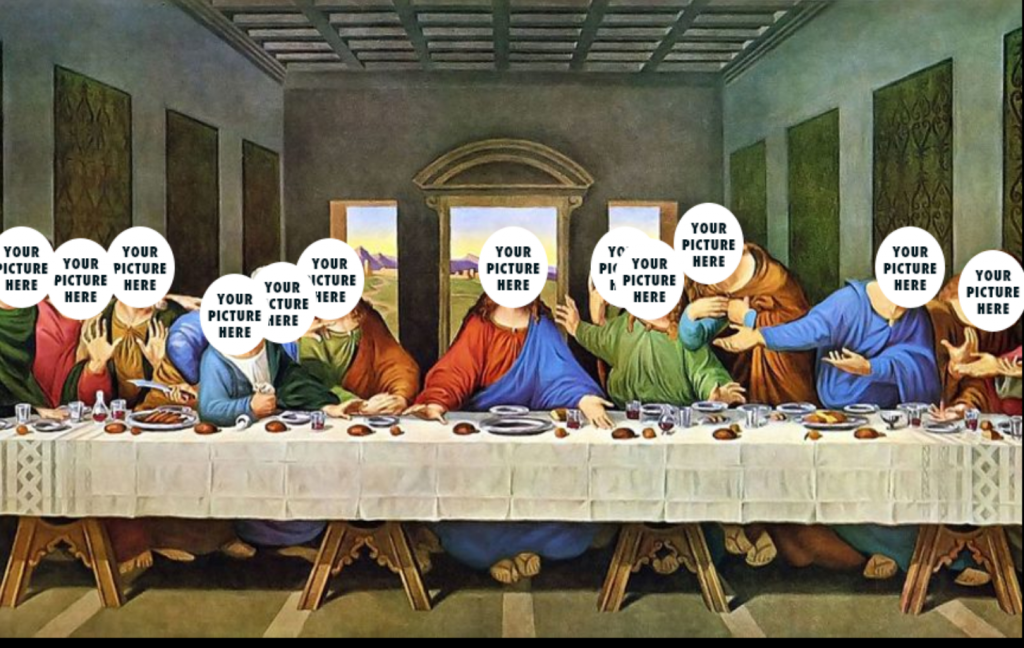
Leonardo da Vinci, The Last Supper
Like da Vinci’s Last Supper, Mount Rushmore, the silly monument to four American presidents carved into the mountains in South Dakota, has become a convenient shell for putting a bunch of celebrities together in a “work of art”:

The meaning of The Last Supper is usually completely irrelevant to the remix of it and although Mt Rushmore sometimes brings a bit more meaning with it, as it can be used to revised the concept of “American Greatness,” it is often just a framework to hold someone’s favourite heroes, some people one finds laughable, or some meme figures.
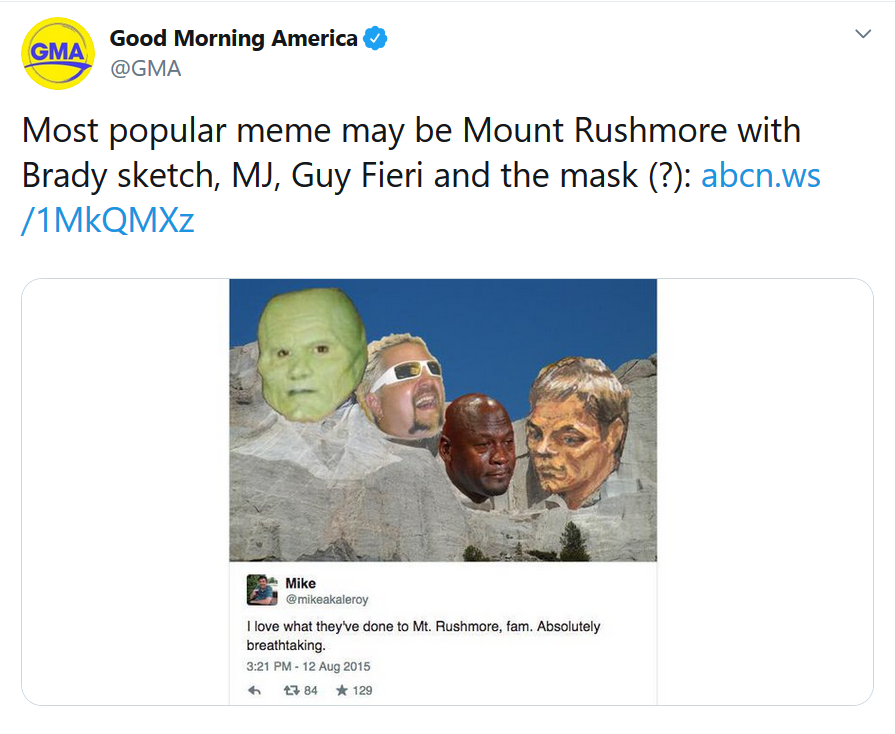
All of the images above have been parodied and used as examples thousands of times, so even the least educated people may well recognize them. But for most people, the images themselves are meaningless. The Last Supper has been repurposed for many Internet memes that do little except group a sub-set of celebrities at the table. The original Biblical meaning and iconography contributes little or nothing to these memes.
The Mona Lisa is probably the most remixed image from the Western tradition of art. It has been so overused that it has virtually none of its original meaning – and no meaning at all, apart from a vague connotation of art and an idea of a beautiful woman – for the average viewer. Representing Kim Kardashian as the Mona Lisa in particular is not an original or interesting idea. Do something more creative and worth saying.

Mona Kardashian has been done to death.
Other paintings of this kind that are often appropriated mainly for their familiarity by people who don’t know or care anything about their original meanings or content include Van Gogh’s self portraits, Warhol’s Marilyns, Dali’s The Persistence of Memory, van Eyck’s Arnolfini portrait, and many other paintings that have attained meme status but about which most people know next to nothing.
Munch’s The Scream may be a special case – partly because it is so negative and does express anxiety and horror even if the viewer knows nothing more about it. Grant Wood’s American Gothic when it gets memed is often used to represent “what really typifies Americans.” On the subject of Americans, it might be added that images like the Uncle Sam poster and “We can do it” are also falling into this category of empty, exploitable shells. All of these images are so overused as to be almost played out of any real meaning.
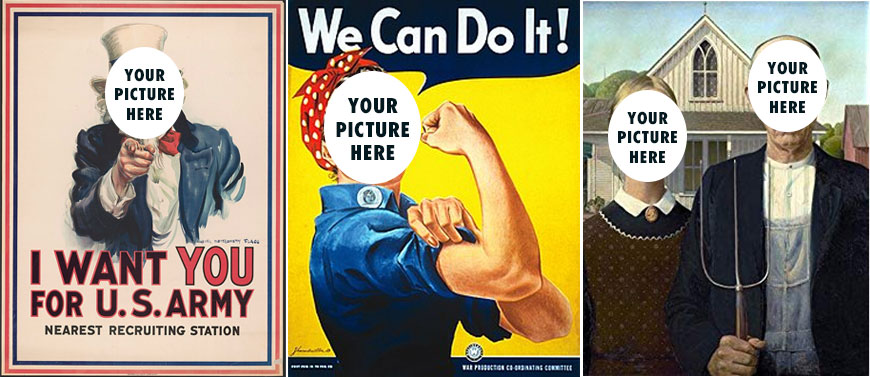
Tired “Amemicana” shells
Shepard Fairey’s HOPE poster has been so widely appropriated, parodied, and memed that the style itself is now a sort of meme shell, and there are online generators and app filters that will take your image and turn it into a poster in that style without much effort on your part. Although something radical could probably still be done with the Fairey original of Obama, most people use it with little understanding of the original context, and using the HOPE format is rarely a really creative (transformative) mode of appropriation.
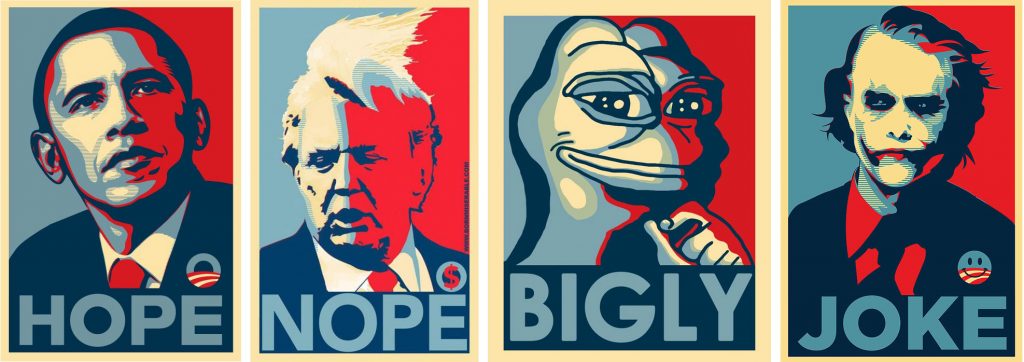
Fairey HOPE poster with a few of the dozens (hundreds?) of knock-off memes based on it
The word trope is a term from literary and rhetorical analysis, referring to a word or expression used in a figurative sense. For instance, if somebody says “she’s doing a tightrope walk with her grades this term” they do not literally mean that she has her grades with her as she walks across a tightrope. “Trope” has gradually come to be used by literary theorists to refer to common and much reused metaphors – referring to love or desire as “fire,” for instance – and has gradually trickled down into common usage where it tends to be used to refer to a tired cliché. (“The trope of the robot who is more human than the people who built him is familiar from many works of SF.”)

Effective figurative words and images tend to move from being true tropes (original, striking metaphors) to becoming commonplaces (familiar tropes) to turning into clichés (tired, overused tropes); and this happens ever more quickly with Internet meme culture.
While visual clichés may be convenient shells for new memes, they usually bring relatively little meaning or feeling with them for most viewers, and thus aren’t really that interesting as subjects of remix.